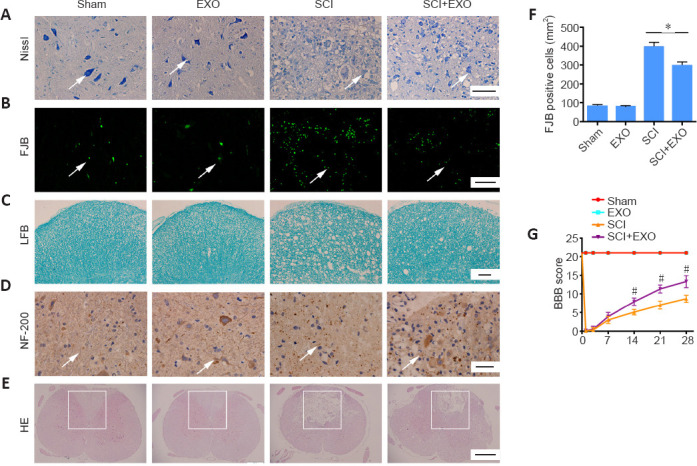Figure 2.

BMSC-EXOs reduce the lesion and improve locomotor functional recovery after SCI.
(A) Nissl staining of spinal cord 72 hours post-SCI. Arrows indicate Nissl-positive cells. (B) FJB staining around the injured lesion at 3 dpi. Arrows indicate FJB-positive cells. (C) LFB staining in spinal cord at 72 hours. (D) Immunohistochemistry for NF-200 (arrows) in spinal cord tissue after severe injury. (E) HE staining in spinal cord 3 dpi. The rectangle indicates the location of the damage. Compared with the sham group, the SCI group showed loss of Nissl bodies, more FJB-positive cells, disordered myelin arrangement, lightly-stained nerve fibers, and severe structural damage. Exosome treatment reversed these pathological changes. Scale bars: 50 µm in A, B, D; 100 µm in C; 500 µm in E. (F) Quantitative analysis of FJB-positive cells. (G) BBB scores post-SCI. Data are expressed as the mean ± SD (n = 6 in F and 10 in G). *P < 0.05; #P < 0.05 vs. SCI group (Student’s t-test). BBB: Basso, Beattie and Bresnahan; BMSC-EXO: bone mesenchymal stem cell-derived exosome; dpi: days post injury; EXO: exosome; FJB: Fluoro-Jade B; HE: hematoxylin and eosin; LFB: Luxol Fast Blue; NF-200: neurofilament 200; SCI: spinal cord injury.
